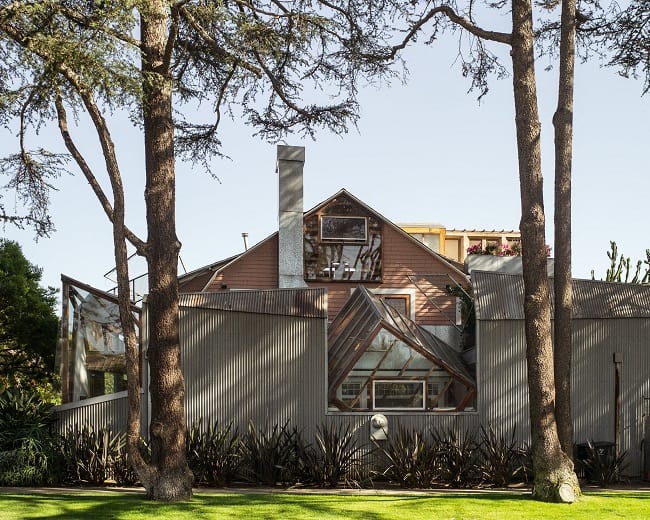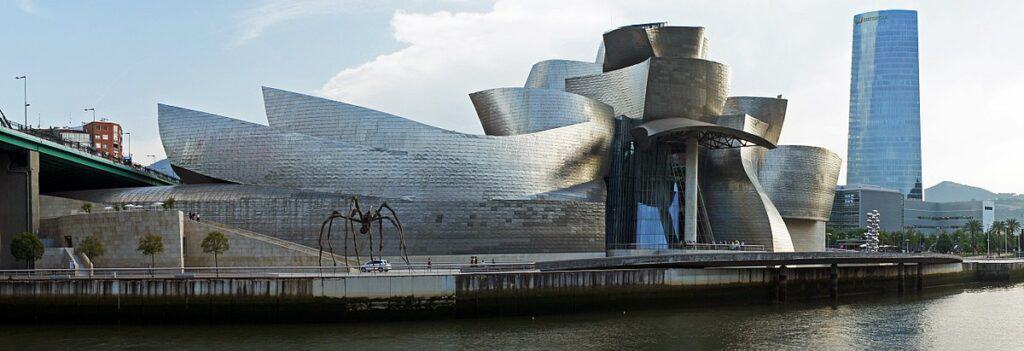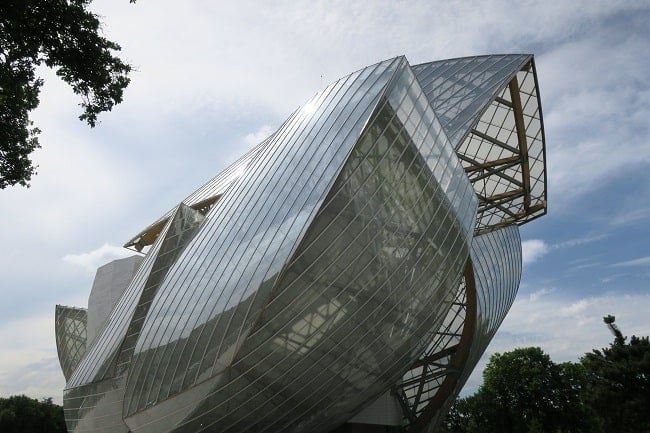Articles and Features
The Audacious and Whimsical Architecture of Frank Gehry
“Take the chance to jump off into the unknown.”
Frank Gehry
The sun-kissed historic city of Arles, a renowned summer holiday destination listed as World Heritage of Humanity UNESCO, from this year on will dazzle locals and international visitors with a recently unveiled attraction: the LUMA Arles tower.
The stainless steel-clad building graces the Provençal city paying homage to its most charming features, namely the well-preserved Roman buildings and the warm sunlight that fascinated Vincent Van Gogh so greatly. It was in fact the Dutch painter – who had in Arles one of his most prolific stays – that stated: “Those who don’t believe in the sun down here are truly blasphemous.”
The 56-meter-high tower is the new, shimmering centerpiece of LUMA Arles, a 27-acre art and culture complex founded by collector Maja Hoffman in 2013 and opened its doors to the public on June 26, 2021. We take a look at the life and career of the man who designed it, Pritzker Prize-winning architect Frank Gehry.
“That’s what an architect should do – be able to have an emotional response to their work that lasts through the centuries.”
Frank Gehry
A Late Start
One would be surprised to know that Gehry, today considered one of the most influential and innovative architects of our times, was almost unknown to the world until his late fifties.
Born in Canada in 1929, he attended the University of Southern California and the Harvard Graduate School of Design. Beginning his career in Los Angeles at Victor Gruen Associates and then Pereira and Luckman, after a short period spent in Paris, he returned to California and started his own firm in 1962.
With his relatively successful practice, he spent years designing hardly more than run-of-the-mill commercial projects: private apartments, offices, and malls. Among his designs, however, Gehry’s most notable work proved to be the renovation of his own Santa Monica residence (1978 and 1994). Originally built in 1920 and purchased by Gehry in 1977, the house features an asymmetrical structure in glass and corrugated steel wrapped around the original building.
He could not have imagined, back then, that the irregular angles, audacious edges, and unpretentious materials of his house would bring him to notoriety in what turned out to be one of the most fortunate midlife crises and career shifts in the history of modern architecture.

Frank Gehry’s Major Projects
Through a series of medium-to-big projects throughout the 1980s and ’90s, Gehry developed a personal architectural vocabulary made of sculptural quality and deconstructed forms which earned him the Pritzker Prize in 1989. However, it was only in the late ‘90s that his reputation soared.
In 1997, Gehry vaulted to a new level of international acclaim when the Guggenheim Museum Bilbao opened in Spain. The iconic curvaceous structure in stone, glass, and titanium that follows the contours of the Nervión River has been hailed by The New Yorker as a “masterpiece of the 20th century,” and legendary architect Philip Johnson dubbed it “the greatest building of our time.”

The museum became famous for its striking, innovative design, but also for the jolting economic effect it had on the city. The building’s popularity was such that the city gave its name to the phenomenon – the ‘Bilbao effect’ – by which cities on the verge of decline try to rebrand themselves thanks to the publicity of striking architecture. Following the success in Spain, Gehry became famous for his work on music venues: the Walt Disney Concert Hall in Los Angeles (2003); the Jay Pritzker Pavilion in Chicago’s Millennium Park (2004); the New World Center for the New World Symphony orchestral academy in Miami Beach, Florida (2011), among others.
Stardom and Controversy
The years that followed saw unprecedented success for the Canadian-American architect and the label ‘starchitect’ – detested by Gehry – stuck. He won an endless number of illustrious commissions, from the Stata Center (2004) at MIT to the Museum of Pop Culture (2000) in Seattle, Washington, and the IAC Building (2007) in New York City.
In 2006, film director and Gehry’s old-time friend Sydney Pollack made a feature-length documentary about the architect’s work and his rise to fame. Titled “Sketches of Frank Gehry,” the documentary was screened out of competition at the 2006 Cannes Film Festival and was well-received by critics.

Controversy, however, was just around the corner. Criticism of his work includes being in the service of corporate branding and causing a waste of structural resources by creating functionless, self-referential forms. In 2014, the opening of Fondation Louis Vuitton, the Bois de Boulogne park in Paris, France, caused an uproar. The jewel-like building has been labeled “a detumescent Sydney Opera House” by one writer. Gehry certainly did not respond well, notoriously raising his middle finger when a journalist brought up the criticisms at a press conference.
Despite the old age, the idea of retiring does not seem to cross Gehry’s mind. On the contrary, he is busier than ever. “I love working. I love working things out. I love the client interaction – I think it’s a 50-50 game. I love that we do what we do, and bring it in under budget, which no one believes, but it’s true,” he said to The Guardian.
His recent projects include the Los Angeles version of New York’s High Line; new office buildings for Warner Bros. in Burbank; and the expansion of the Philadelphia Museum of Art. However, his focus lies on social justice and cultural projects such as a housing complex on Wilshire Boulevard for homeless veterans and the River Project in Los Angeles.
LUMA Arles
Gehry’s most recent fatigue – it took over a decade to build – the LUMA Arles tower has recently opened its doors in South France as the centerpiece of the LUMA Arles campus. The complex is the brainchild of Swiss collector Maja Hoffmann who in 2004 established The LUMA Foundation in Zurich, intending to support artistic creation and explore the relationships between art, environmental issues, human rights, education, and research.
Launched in 2013, LUMA Arles is an interdisciplinary creative campus where art, culture, science, and research coexist, located on the Parc des Ateliers, a former railway wasteland. On this site, Gehry’s tower interweaves harmoniously with seven 19th-century factory structures.
A place of creation and experimentation, the twisted six-story tower, on top of the massive glass drum that forms its base, houses exhibition galleries, project spaces, and the LUMA’s research and archive facilities, alongside workshop and seminar rooms.
Gehry has talked about drawing inspiration from local geological formations, Roman architecture, and the colors of the sky in Van Gogh’s paintings: “We wanted to evoke the local, from Van Gogh’s ‘Starry Night’ to the soaring rock clusters you find in the region. Its central drum echoes the plan of the Roman amphitheater.”
Although the city, with its Roman amphitheater, the Fondation Vincent van Gogh Arles, and the yearly photography festival Les Rencontres d’Arles, has long been a cultural nexus, the Luma Arles cultural district is expected to entice a larger audience of art lovers from around the world as well as international artists attracted by unexplored artistic possibilities and multidisciplinary collaborations.
The opening program includes work by 45 artists and designers and special new commissions for Luma by international artists of the caliber of Ólafur Elíasson, Koo Jeong A, Kapwani Kiwanga, Helen Marten, and Philippe Parreno, among others.
Relevant sources to learn more
Museum Architecture Today: Contemporary Spaces, Bold Design
Architect or Artist or Both? The World’s Leading Multidisciplinary Creators
The Art of Design: Iconic Designer Chairs Everyone Should Know
You may also like:
Master of Light: Tadao Ando
Le Corbusier: Between Modernity and Controversy
The Harmony of Form and Function: Frank Lloyd Wright’s Organic Architecture

